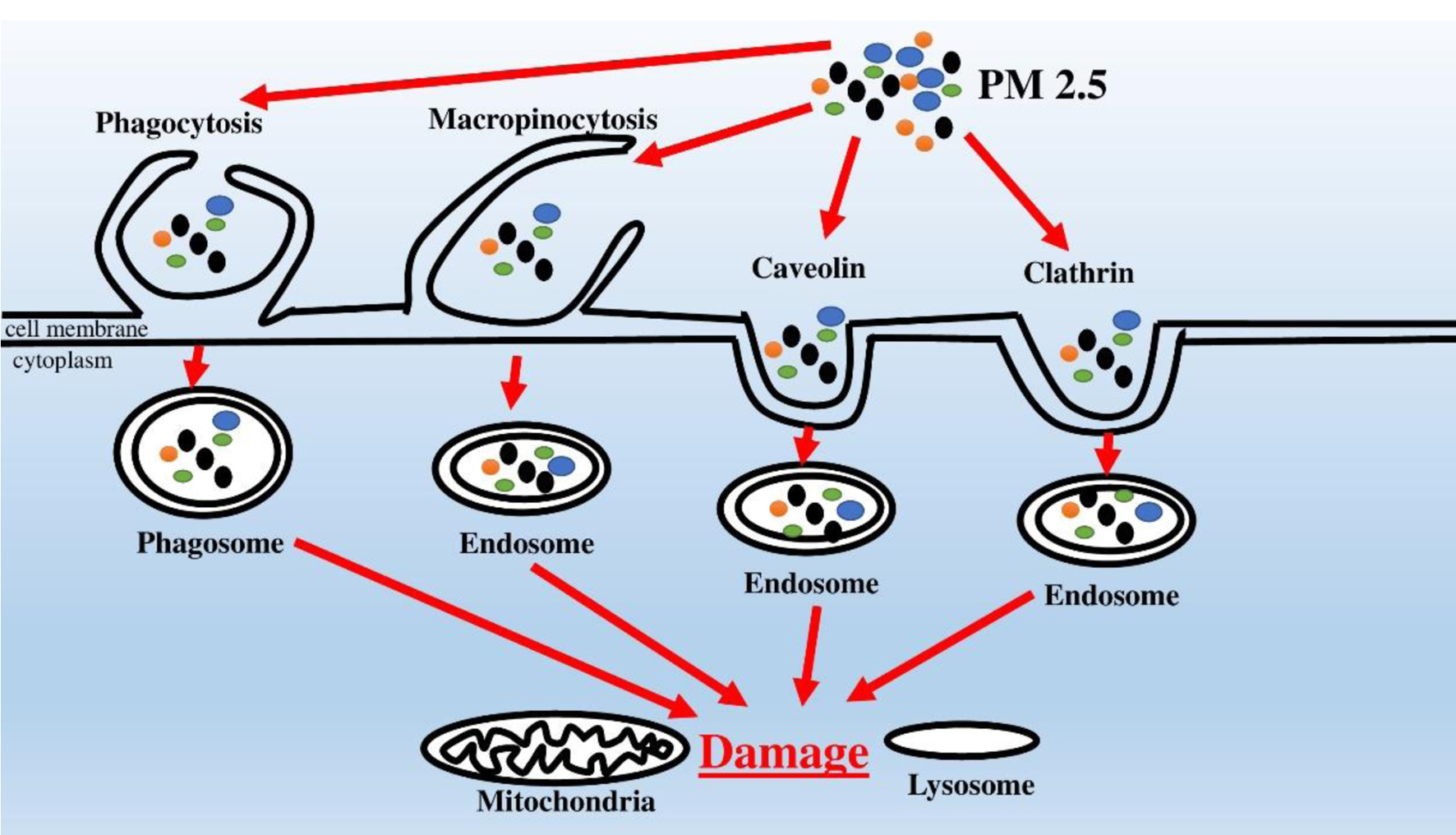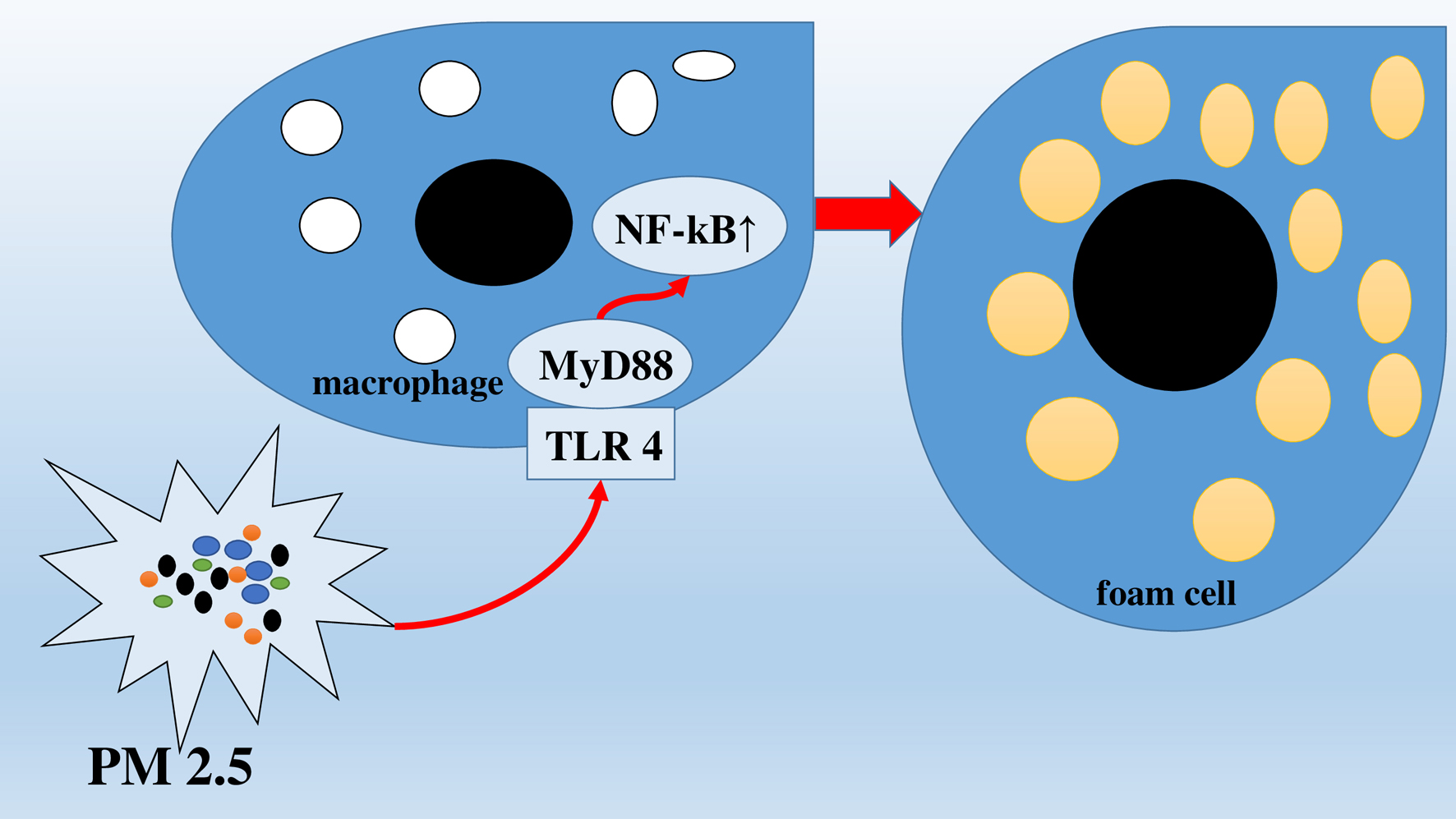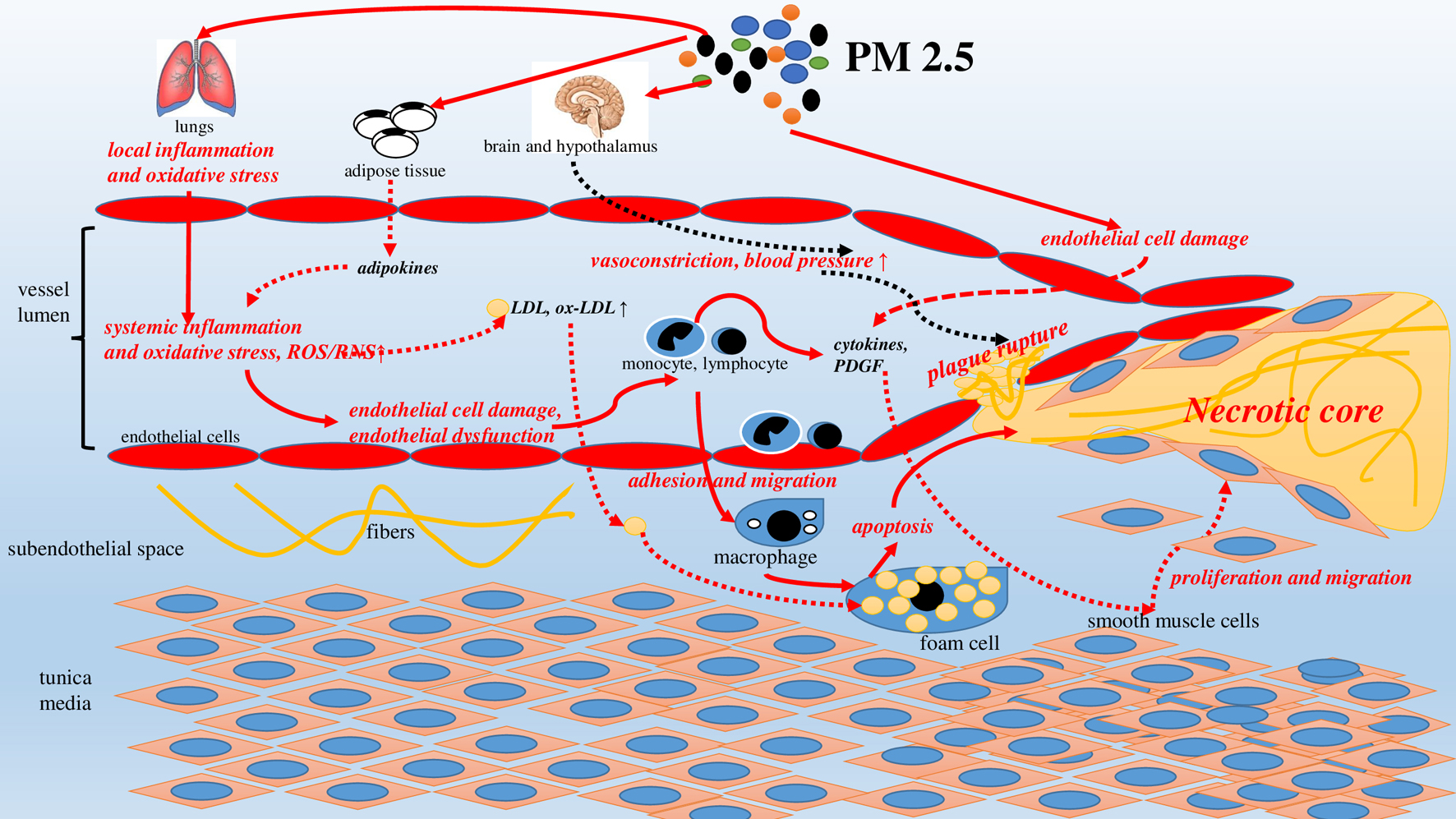
Figure 1. Mechanisms of PM 2.5 penetration into endotheliocytes and adverse intracellular effects.
| Cardiology Research, ISSN 1923-2829 print, 1923-2837 online, Open Access |
| Article copyright, the authors; Journal compilation copyright, Cardiol Res and Elmer Press Inc |
| Journal website https://www.cardiologyres.org |
Review
Volume 13, Number 5, October 2022, pages 268-282
The Role of Fine Particles (PM 2.5) in the Genesis of Atherosclerosis and Myocardial Damage: Emphasis on Clinical and Epidemiological Data, and Pathophysiological Mechanisms
Figures



Table
| Study date and country and/or locality | Number of individuals examined | Average concentration of PM 2.5 in the air, µg/m3 | Assessed biomarker of subclinical atherosclerosis | Key study findings evidencing the relation between pollution of air with PM 2.5 and subclinical markers of atherosclerosis | Source |
|---|---|---|---|---|---|
| CIMT: carotid intima-media thickness; CAC: coronary artery calcification; TAC: thoracic aortic calcification; ABI: ankle-brachialis index; CI: confidence interval. | |||||
| 1998 - 2003, Los-Angeles (USA) | n = 798 | 20.3 | CIMT | Strong correlation between increased PM 2.5 levels and CIMT value. For every 10 µg/m3 increase in PM 2.5, the average increase in CIMT was 5.9% (95% CI: 1-11%). The largest increase in CIMT (by 15.7% (95% CI: 5.7-26.6%)) was characteristic of women aged 60 years. | Kunzli et al [35] |
| 2007 - 2009, University of Southern California (USA) | n = 861 | 15.7 | CIMT | The increase in the degree of air pollution with PM 2.5 with the increase in CIMT by 7.8 µm (95% CI: 0.3-15.9) and 10.1 µm (95% CI: 1.8-18.5) in children aged 0 - 5 years and children aged 6 - 12 years, respectively. | Breton et al [36] |
| 2000 - 2003, Germany | n = 3,380 | 16.8 | CIMT | The increase in content of PM 2.5 was associated with the 4.3% increase in CIMT (95% CI: 1.9-6.7%) | Bauer et al [37] |
| 2000 - 2005, USA | n = 5,560 | 16.6 | CIMT | The increase in PM 2.5 levels by 2.5 µg/m3 was associated with the annual increase in TIMSA of 5 µm (95% CI: 2.6 - 7.4 µm/year) | Adar et al [38] |
| 2000 - 2002, USA | n = 5,172 | 16.7 | CIMT | CIMT positively correlated with the effect of PM 2.5 (1-4% increase for every 21 µg/m3) even after adjusting for age-sex characteristics and other risk factors for atherosclerosis. | Diez Roux et al [39] |
| 2000 - 2002, USA | n = 6,256 | 13.66 | CIMT | The increase in PM 2.5 consisting of a number of components (sulfur, elemental carbon, and organic carbon) with the exception of silicon, was closely correlated with CIMT. | Sun et al [30] |
| 2000 - 2003, Germany | n = 4,494 | 22.8 | CAC | People living closer to the source of air pollution with PM 2.5 (highway) had a higher CAC value. Halving of the distance between the house and the road was associated with the 7.0% increase in CAC (95% CI: 1.1-14.4%). | Hoffmann et al [40] |
| 2002 - 2012, USA | n = 6,795 | 20.6 | CAC | For each increase in PM 2.5 by 5 µg/m3, CAC increased by 4.1 Agatston units per year. | Kaufman et al [41] |
| 2000 - 2003, Ruhr Area (Germany) | n = 4,348 | 22.8 | ABI | Living near highways was associated with the decrease in ABI, which is characteristic of the presence of atherosclerotic diseases of peripheral arteries. In addition, people living in the immediate vicinity of a road (within the radius of 50 m) had the 1.77 (95% CI: 1.21 - 2.1) times higher risk of developing atherosclerotic diseases compared with those living in the distance of more than 200 m. | Hoffmann et al [42] |
| 2000 - 2003, Germany | n = 4,248 | 16.62 | TAC | The 2.4 µg/m3 increase in PM 2.5 in the air is associated with the 18.1% increase in TAC (95% CI: 6.6-30.9%). | Kalsch et al [43] |